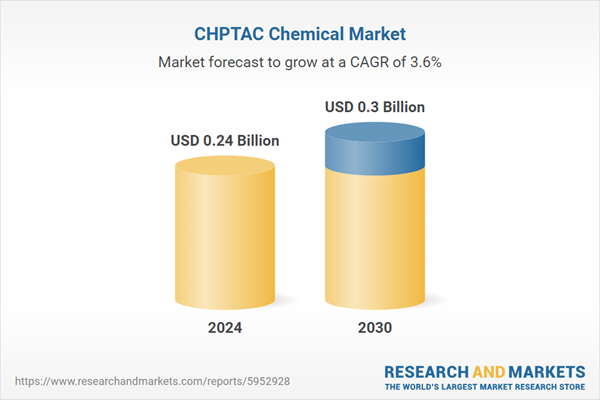Paper & Pulp is the fastest growing segment, North America is the largest market globally
Speak directly to the analyst to clarify any post sales queries you may have.
10% Free customizationThis report comes with 10% free customization, enabling you to add data that meets your specific business needs.
Key Market Drivers
The expanding paper and pulp industry demand significantly drives the global CHPTAC chemical market. CHPTAC is crucial for producing cationic starch, enhancing paper strength and retention during manufacturing, which sustains substantial demand. For instance, according to the European Confederation of the Paper and Board Industries (Cepi), global paper and board production grew by 3.6% in 2024, demonstrating expansion in a key end-use sector for CHPTAC. Concurrently, increasing water treatment applications constitute a pivotal market driver. CHPTAC derivatives are extensively used as flocculants and coagulants, essential for municipal and industrial wastewater treatment processes to meet stringent environmental regulations and address rising purification needs.Key Market Challenges
The volatility of raw material prices, particularly for epichlorohydrin, presents a significant challenge directly hampering the growth of the Global CHPTAC Chemical Market. Fluctuating costs for this primary precursor directly influence CHPTAC manufacturing expenses, subsequently impacting product pricing strategies and overall profitability for producers. Such instability creates considerable uncertainty in supply chain management and inhibits long-term investment planning.Key Market Trends
Advancements in green chemistry manufacturing processes for CHPTAC represent a significant trend, focusing on reducing environmental impact throughout the production lifecycle. This involves implementing more sustainable synthetic routes and optimizing energy consumption, enhancing CHPTAC’s market appeal by aligning with global sustainability objectives. According to the German Chemical Industry Association (VCI), in 2023, investments in environmental protection within the German chemical industry amounted to approximately EUR 580 million, underscoring broad industry commitment to sustainable operations. This shift positions manufacturers to meet increasing demand for eco-efficient chemical inputs.Key Market Players Profiled:
- Dongying J&M Chemical Co., Ltd,
- Filo Chemical, Inc.
- Hefei TNJ Chemical Industry Co.,Ltd.
- SACHEM, Inc.
- Shandong Tiancheng Wanfeng Chemcial Co., Ltd.
- Parchem Fine & Specialty Chemicals, Inc.
- Merck KGaA
- SKW Quab Chemicals Inc.
- Jiangsu Jinshan Chemical Co. Ltd.
- ShanXi Jinxinghua Chemical Co. Ltd.
Report Scope:
In this report, the Global CHPTAC Chemical Market has been segmented into the following categories:By End User Industry:
- Paper & Pulp
- Textile
- Oil & Gas
- Beauty & Personal Care
- Water & Wastewater Treatment
- Others
By Region:
- North America
- Europe
- South America
- Asia Pacific
- Middle East & Africa
Competitive Landscape
Company Profiles: Detailed analysis of the major companies present in the Global CHPTAC Chemical Market.Available Customizations:
With the given market data, the publisher offers customizations according to a company's specific needs. The following customization options are available for the report:- Detailed analysis and profiling of additional market players (up to five).
This product will be delivered within 1-3 business days.
Table of Contents
Companies Mentioned
- Dongying J&M Chemical Co., Ltd,
- Filo Chemical, Inc.
- Hefei TNJ Chemical Industry Co.,Ltd.
- SACHEM, Inc.
- Shandong Tiancheng Wanfeng Chemcial Co., Ltd.
- Parchem Fine & Specialty Chemicals, Inc.
- Merck KGaA
- SKW Quab Chemicals Inc.
- Jiangsu Jinshan Chemical Co. Ltd.
- ShanXi Jinxinghua Chemical Co. Ltd.
Table Information
| Report Attribute | Details |
|---|---|
| No. of Pages | 184 |
| Published | November 2025 |
| Forecast Period | 2024 - 2030 |
| Estimated Market Value ( USD | $ 0.24 Billion |
| Forecasted Market Value ( USD | $ 0.3 Billion |
| Compound Annual Growth Rate | 3.5% |
| Regions Covered | Global |
| No. of Companies Mentioned | 10 |









